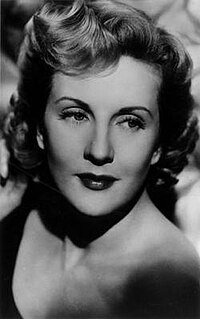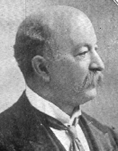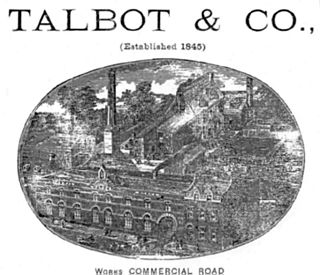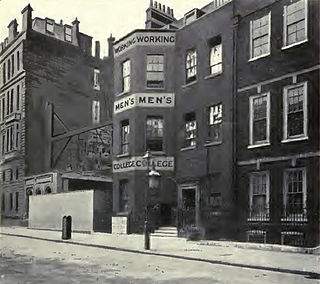
James Harwood Panting (1854 [1] - 1924 [2] ) was a British writer who specialised in school stories for boys. He was the editor of Young Folks [3] and a member of the editorial staff of the South London Press.

James Harwood Panting (1854 [1] - 1924 [2] ) was a British writer who specialised in school stories for boys. He was the editor of Young Folks [3] and a member of the editorial staff of the South London Press.
Panting married Bertha Emily Alais in 1883 [5] and they had sons Ray and Arnold and daughters Ruth and Phyllis. A son Cyril is recorded in the 1891 census but not in 1911. At the time of the 1891 census the family were living at 67 Ballater Road, Brixton, London. [6] George B. Hicklenton, a printer's reader, was lodging with them.
By the time of the 1911 census the family were at 47 Beechdale, Brixton Hill, London. All the children were born in Brixton. [4] Both Arnold and Phyllis became journalists, Phyllis as the noted women's magazine editor Phyllis Digby Morton. The family employed one servant. In 1921, The Literary Year-Book gave an address for Panting of The Shack, Melrose Avenue, Norbury, London SW19. [7]
After earlier literary works and two adult novels, Panting specialised in boys school stories. As Claud Heathcote [8] he contributed stories to The Boys' Friend in 1895 [9] and The Union Jack in 1898. [10]
Panting died in the Croydon district of Surrey in 1924. [2]

Imelda Anne Crawford was a British film actress, born in Palestine of an English mother and Scottish father and brought up in Edinburgh.
Francis Robinson Phelps was an Anglican bishop in the first half of the 20th century.
Findmypast is a UK-based online genealogy service owned, since 2007, by British company DC Thomson. The website hosts over 4 billion searchable records of census, directory and historical record information. It originated in 1965 when a group of genealogists formed a group named "Title Research". The first internet website went live in 2003.
Oliver Lyle (1891–1961) was a British sugar technologist during the early 20th century

Lilian Shelley was a popular music hall entertainer and later artists' model in London in the early 1900s known as "The Bug" or "The Pocket Edition". She posed for Jacob Epstein and Augustus John. John's portrait of Shelley was described as one of the "star turns" in an exhibition Pictures of Women at the Wildenstein Galleries, London, in 1940. He called her "Bill".
Alexander Rainnie was a Scottish footballer who played as a wing half in the Football League for Newcastle United, Darlington and Ashington. He also played non-league football for Hebburn Argyle and South Shields.
Herbert John McFerran was an English footballer who played as a centre forward in the Football League for Darlington. He was also on Durham City's books but never played League football for them.
William Edmunds was a footballer who played as a centre forward in the Football League for Darlington. He also played non-league football in the north-east of England for clubs including Shildon and Spennymoor United.

Phyllis May Digby Morton, born Phyllis May Panting, was a British fashion journalist who was the innovative editor of Woman and Beauty. During the Second World War she survived an attack by a German U-boat on a ship on which she and her husband were travelling.
Robert Mitcheson was an English footballer who played as an outside forward in the Football League for Darlington and in non-league football for Leadgate Park.

Samuel Knight (1834-1911) was a British architect practicing from Cornhill Chambers, 62 Cornhill, London EC and later 175 and 176 Temple Chambers, Tudor Street, London EC.

Albert Edward Kingwell was an English architect, surveyor and land agent who was one of the first to use concrete in his practice. He oversaw the Jack Estate at Hadley Wood in Hertfordshire for more than 50 years.
The reverend Alwin Corden "Teddie" Larmour was a British churchman, school teacher and philatelist who edited The London Philatelist during the Second World War.
Juanita "Nita" Gordon Lloyd Burnby of Wirksworth, Derby, was a British pharmacist who was president of the British Society for the History of Pharmacy and the author of works on the history of the area once occupied by the Edmonton Hundred, and the history of medicine and pharmacy.
The Iris Publishing Company were a small publishing company located at 30 and 31 Furnival Street, London, in the late nineteenth century and the early years of the twentieth century. They were associated with The Chichester Press and specialised in publishing translations of foreign language works into English.

Hannah Courtoy, born Hannah Peters, was a London society woman who inherited a fortune from the merchant John Courtoy in 1815. Her distinctive Egyptian-style mausoleum in London's Brompton Cemetery has been the subject of considerable curiosity and speculation ever since a report by Reuters in 1998 repeated claims that it contained a working time machine.

Thomas Talbot was a beverage bottler of Gloucester who founded the Talbot Mineral Water Company in 1845. In 1886, he was elected high sheriff of Gloucester and later became an alderman of the city.

Frank Wallace Galton, sometimes known as Frank Wallis Galton, was an English political writer and journalist who was secretary to Sidney and Beatrice Webb and later to the Fabian Society. In 1929, he was appointed to the Royal Commission on Transport.
Walter Kelly Firminger was archdeacon of Calcutta and a historian of India who was the first editor of Bengal, Past & Present, the journal of Calcutta Historical Society. He was a fellow of the Royal Geographical Society.
Clifton Robbins was an English journalist, writer of golden age detective fiction in the 1930s, and executive of the International Labour Organization. His stories of amateur detectives involved murder and international drug smuggling and he is best known for his series featuring Clay Harrison, a London barrister turned amateur detective, and his clerk Henry. He worked for the International Labour Organization from 1920, ultimately becoming director of the ILO London office in 1945 before retiring in 1950 to become principal of the Y.M.C.A. College for Adults in Kingsgate, Kent, for eight years.